In the Garden of 3D Printers
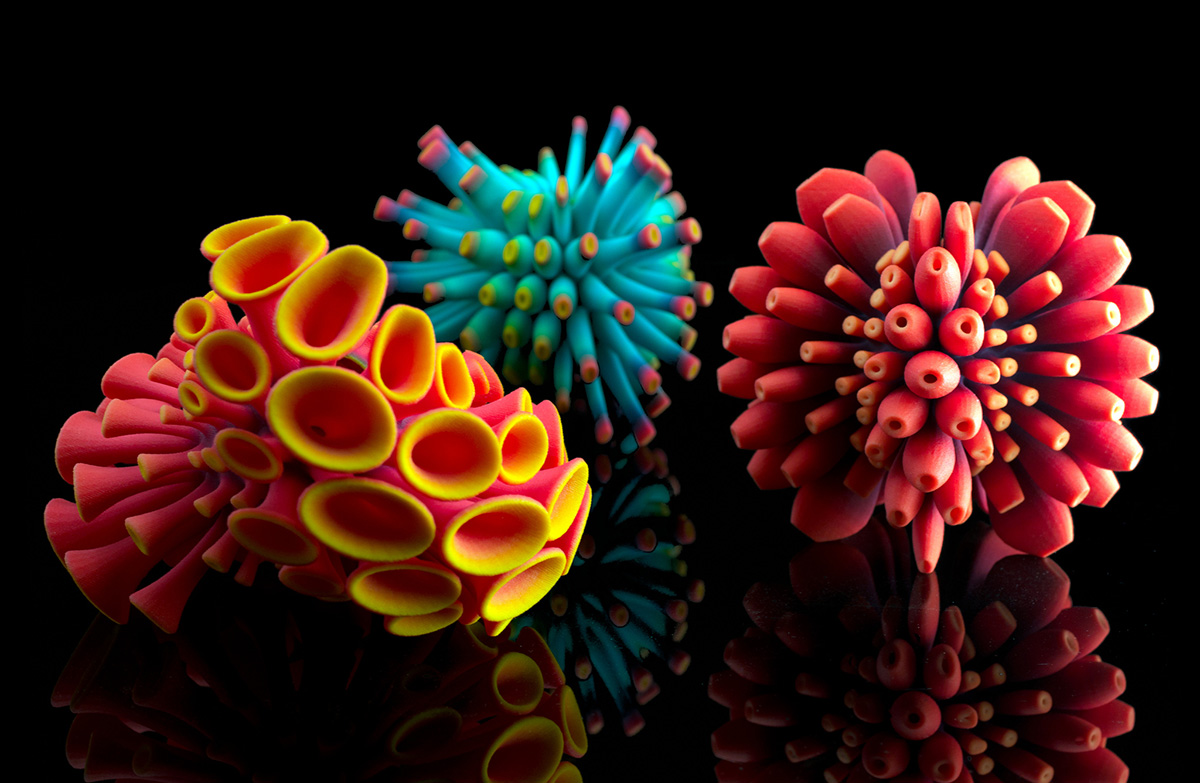 [Image: Unrelated image of incredible floral shapes 3D-printed by Jessica Rosenkrantz and Jesse Louis-Rosenberg (via)].
[Image: Unrelated image of incredible floral shapes 3D-printed by Jessica Rosenkrantz and Jesse Louis-Rosenberg (via)].A story published earlier this year explained how pollinating insects could be studied by way of 3D-printed flowers.
The actual target of the study was the hawkmoth, and four types of flowers were designed and produced to help understand the geometry of moth/flower interactions, including how "the hawkmoth responded to each of the flower shapes" and "how the flower shape affected the ability of the moth to use its proboscis (the long tube it uses as a mouth)."
Of course, a very similar experiment could have been done using handmade model flowers—not 3D printers—and thus could also have been performed with little fanfare generations ago.
But the idea that a surrogate landscape can now be so accurately designed and manufactured by printheads that it can be put into service specifically for the purpose of cross-species dissimulation—that it, tricking species other than humans into thinking that these flowers are part of a natural ecosystem—is extraordinary.
 [Image: An also unrelated project called "Blossom," by Richard Clarkson].
[Image: An also unrelated project called "Blossom," by Richard Clarkson].Many, many years ago, I was sitting in a park in Providence, Rhode Island, one afternoon reading a copy of Germinal Life by Keith Ansell Pearson. The book had a large printed flower on its front cover, wrapping over onto the book's spine.
Incredibly, at one point in the afternoon a small bee seemed to become confused by the image, as the bee kept returning over and over again to land on the spine and crawl around there—which, of course, might have had absolutely nothing to do with the image of a printed flower, but, considering the subject matter of Ansell Pearson's book, this was not without significant irony.
It was as if the book itself had become a participant in, or even the mediator of, a temporary human/bee ecosystem, an indirect assemblage created by this image, this surrogate flower.
In any case, the image of little gardens or entire, wild landscapes of 3D-printed flowers so detailed they appear to be organic brought me to look a little further into the work of Jessica Rosenkrantz and Jesse Louis-Rosenberg, a few pieces of whose you can see in the opening image at the top of this post.
Their 3D-printed floral and coral forms are astonishing.
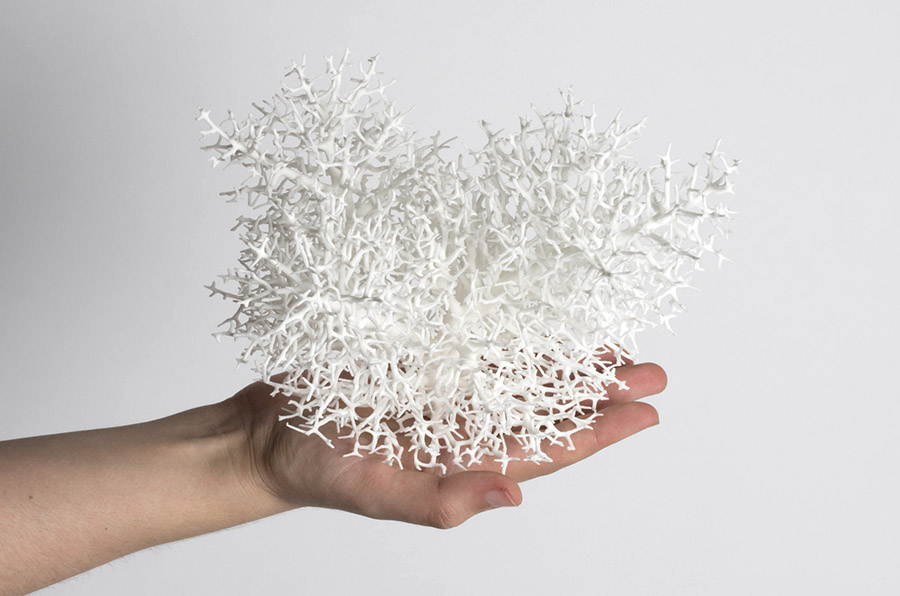 [Image: "hyphae 3D 1" by Jessica Rosenkrantz and Jesse Louis-Rosenberg].
[Image: "hyphae 3D 1" by Jessica Rosenkrantz and Jesse Louis-Rosenberg].Rosenkrantz's Flickr page gives as clear an indication as anything of what their formal interests and influences are: photos of coral, lichen, moss, mushrooms, and wildflowers pop up around shots of 3D-printed models.
They sometimes blend in so well, they appear to be living specimens.
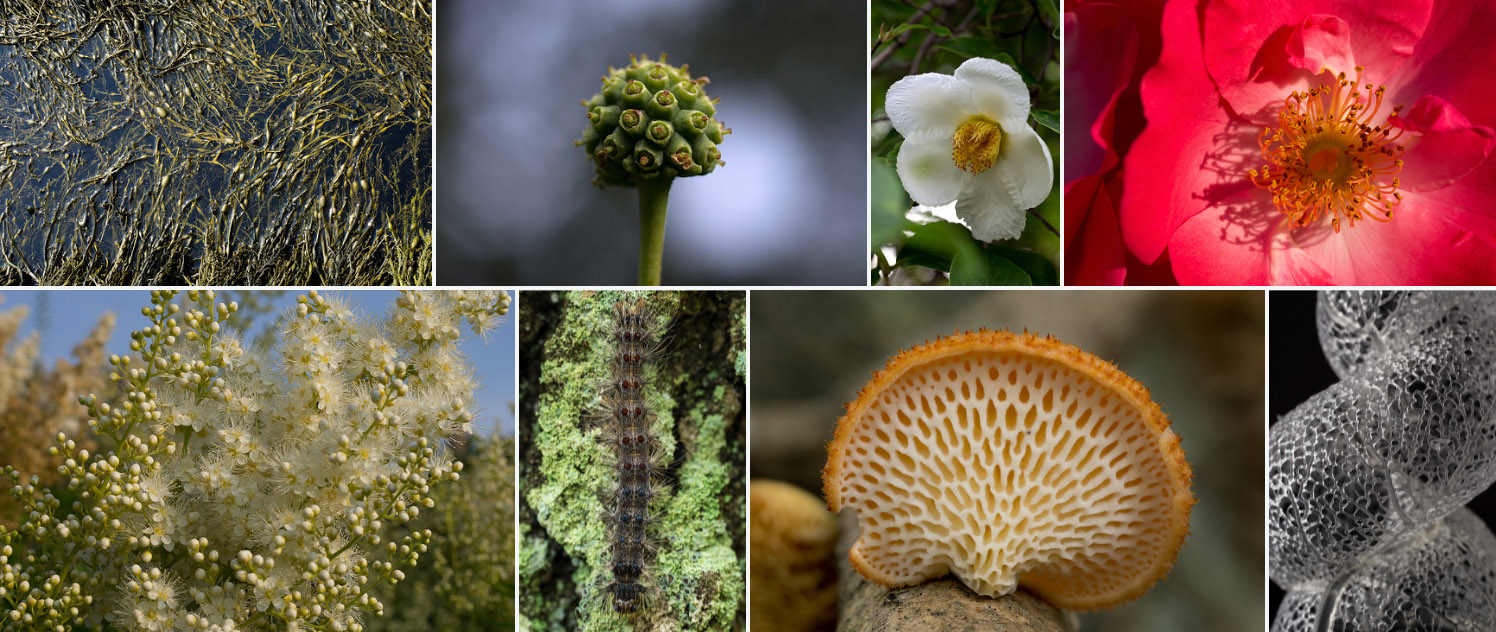 [Image: Spot the model; from Jessica Rosenkrantz's Flickr page].
[Image: Spot the model; from Jessica Rosenkrantz's Flickr page].There is an attention to accuracy and detail in each piece that is obvious at first glance, but that is also made even more clear when you see the sorts of growth-studies they perform to understand how these sorts of systems branch and expand through space.
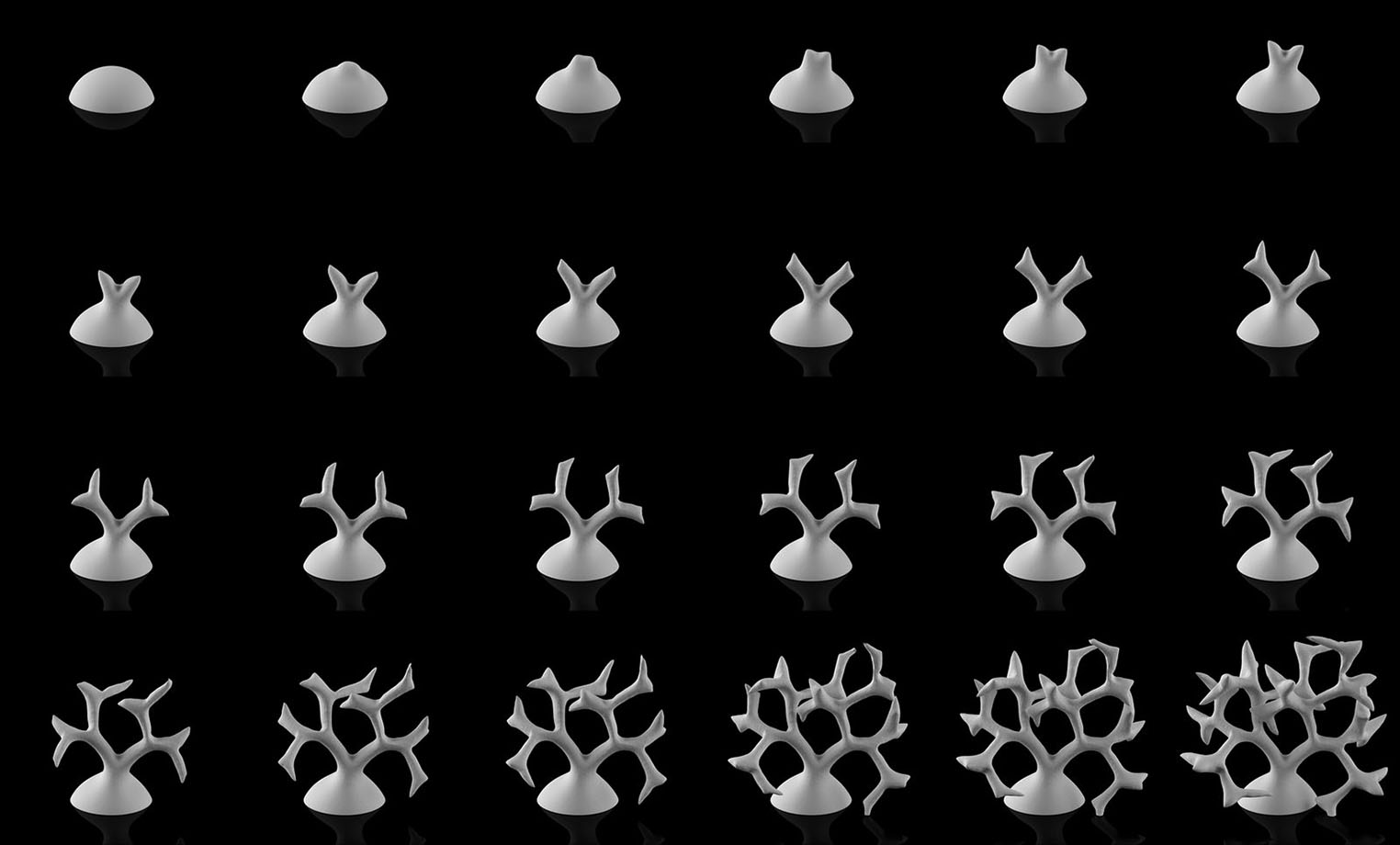 [Image: "Floraform—Splitting Point Growth" by Jessica Rosenkrantz and Jesse Louis-Rosenberg].
[Image: "Floraform—Splitting Point Growth" by Jessica Rosenkrantz and Jesse Louis-Rosenberg].The organism as space-filling device.
And the detail itself is jaw-dropping. The following shot shows how crazy-ornate these things can get.
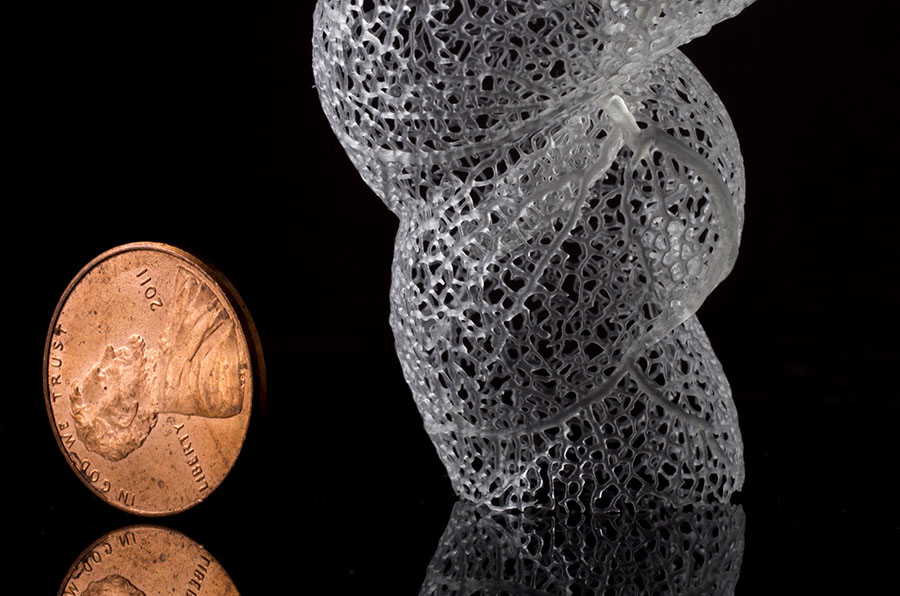 [Image: "Hyphae spiral" by Jessica Rosenkrantz and Jesse Louis-Rosenberg].
[Image: "Hyphae spiral" by Jessica Rosenkrantz and Jesse Louis-Rosenberg].Anyway, while this work is not, of course, related to the hawkmoth study with which this post began, it's nonetheless pretty easy to get excited about the scientific and aesthetic possibilities opened up by some entirely speculative future collaboration between these sorts of 3D-printed models and laboratory-based ecological research.
One day, you receive a mysterious invitation to visit a small glass atrium constructed atop an old warehouse somewhere on the outskirts of New York City. You arrive, baffled as to what it is you're meant to see, when you notice, even from a great distance, that the room is alive with small colorful shapes, flickering around what appears to be a field of delicate flowers. As you approach the atrium, someone opens a door for you and you step inside, silent, slightly stunned, noticing that there is life everywhere: there are lichens, orchids, creeping vines, and wildflowers, even cacti and what appears to be a coral reef somehow inexplicably growing on dry land.
But the room does not smell like a garden; the air instead is charged with a light perfume of adhesives.
 [Image: "Hyphae crispata #1 (detail)" by Jessica Rosenkrantz and Jesse Louis-Rosenberg].
[Image: "Hyphae crispata #1 (detail)" by Jessica Rosenkrantz and Jesse Louis-Rosenberg].Everything you see has been 3D-printed, which comes as a shock as you begin to see tiny insects flittering from flowerhead to flowerhead, buzzing through laceworks of creeping vines and moss—until you look even more carefully and realize that they, too, have been 3D-printed, that everything in this beautiful, technicolor room is artificial, and that the person standing quietly at the other end of the room amidst a tangle of replicant vegetation is not a gardener at all but a geometrician, watching for your reaction to this most recent work.





Comments are moderated.
If it's not spam, it will appear here shortly!
Post a Comment